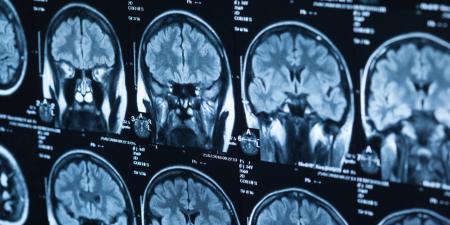Abstract
Invisibility of racial and ethnic inequity in clinical research means many important features of disease etiology and symptom presentation are often unaccounted for. Similarly, binary (ie, gay or straight) definitions of sexuality render bisexual women’s experiences invisible, and this invisibility has 2 important consequences for minority groups’ members’ health, which this article considers.
Binary as Paradigm
Philosopher of science Thomas Kuhn argued that entities or phenomena incompatible with a current paradigm in a scientific field are not recognized for what they are, or possibly not seen at all, since paradigms discourage unexpected discoveries.1 Continued invisibility of bisexual women in medicine, we argue, demonstrates this dynamic and too often blocks bisexual women’s access to resources, including care. Making access to health services equitable will require paradigm-shifting confrontation with cultural biases and dismantling of persistent myths that have generated and sustained bisexual women’s invisibility in health care.
Starting in 2011, the US Department of Health and Human Services (HHS),2 the Institute of Medicine (IOM),3 and the National Institutes of Health (NIH)4 recognized the health inequity suffered by sexual and gender minorities (SGMs) and recommended prioritizing these minorities’ health interests. Although these efforts promised departure from “gay vs straight” binary definitions of sexuality, a follow-up NIH report explained that, among 279 studies focused on SGM health that it funded in 2012, only one focused solely on bisexual women; roughly 20 grouped bisexual women with other sexual minority women.4 Setting aside implications for gender equity, these numbers are troubling for another reason: bisexual women are the largest subgroup within lesbian, gay, bisexual, and transgender (LGBT) sexual minority communities, a fact that tends to surprise many, including bisexual women.5 A national 2019 Centers for Disease Control and Prevention (CDC) survey of high school students documented that a median of 9% of students identified as bisexual compared to a median of 3% identifying as gay or lesbian.6 Yet the CDC’s report of sexual contacts among high school students represents sexual minority students monolithically, folding bisexual contacts into the category “same sex only or both sexes” and treating “gay, lesbian, and bisexual” as a single category of sexual identity.7
Despite being common, grouping bisexual and lesbian women together makes little sense and needs correction in health equity research because it reproduces monosexism (ie, the view that sexual attraction is only to one gender) and thereby categories that are reductionist—but familiar—to researchers generating the evidence base that clinicians use to care for patients. For example, a National LGBT Cancer Network report indicating that lesbian and bisexual women are at increased risk for some cancers implicitly compares these women to heterosexual women.8 Grouping bisexual women with lesbian women seems to express hope that eventually this group will become more homogeneous (ie, when some bisexual women begin identifying as lesbian and others “return” to heterosexuality), reproducing a neat and tidy monosexual, straight vs gay binary.9 Such hope, rooted in the discomfort of those who view the notion of bisexuality as too liminal, too disruptive of culturally dominant definitions of sexual desire,10 is harmful to patients whose health depends on more inclusive acceptance of sexual and gender diversity and plurality.
Comfort and Clinical Encounters
Puritanical roots run deep in the United States and still manifest in clinical encounters. Oppression incurred by binary monosexism is exacerbated by sexuality being a culturally taboo subject, even when it is clinically relevant. Data collection about sexual orientation and gender identity (SOGI) is relatively new in federally funded health research and even newer in clinical documentation. In fact, HHS has only recently required electronic health records (EHRs) to contain a modifiable field for including a patient’s SOGI data in the EHR, which was first suggested by the Centers for Medicare and Medicaid Services in 2015.2
Bisexual youth are less likely than lesbian and gay youth to be “out” to their clinicians, despite their increased risk.
It doesn’t help that some clinicians assume that patients don’t want to be asked about sexual orientation because it would be uncomfortable or inappropriate. One study found that 80% of physicians thought patients would decline to answer questions about their sexual and gender identities.11 But in national surveys of LGB and heterosexual patients, 10% of respondents reported that they would not disclose their sexual identity to their doctors and 60% felt that disclosure was relevant to their care.11,12 One explanation for this discrepancy is that physicians—who, unlike their patients, might see sexuality as taboo—might themselves feel uncomfortable discussing the topic. Some respond to nondichotomous sexual identities by invoking a range of sexual stereotypes (eg, that bisexual people are hypersexual, unfaithful to their partners, or never monogamous)9,13 that perhaps generate more discomfort. Possibly for this reason, physicians either refrain from asking sexuality questions or frame sexuality questions so as to discourage disclosures (eg, by incorporating some of the above stereotypes),14,15 which can then make patients uncomfortable. This dynamic can exacerbate the invisibility of bisexual women.
Discomfort can also be managed with (unreliable) shortcuts, perhaps by looking for clues in the gender of a patient’s romantic or sexual partner. Two women in a relationship tend to be read as lesbian, 2 men as gay, and a woman and a man as straight, when any of these apparently conventional couplings might involve bisexual people and could be relevant to a patient’s health. Asking, “Do you have sex with men, women, or both?” (a current standard in history taking taught to medical students16) suggests that a right answer is one that reduces sexual orientation to current sexual behavior. Given the definition of bisexual used by the NIH’s SGM Research Office that is attributed to bisexual researcher and educator Robyn Ochs (ie, “the potential to be attracted—romantically and/or sexually—to people of more than one gender, not necessarily at the same time, not necessarily in the same way, and not necessarily to the same degree”17), it is no wonder that monogamous bisexual patients might feel puzzled by this question.9,10 Since bisexual people compose the largest subgroup of the LGBT population,18 it is likely that a patient who identifies as an SGM will be answering in a way that is more amenable to an open-ended prompt. Instead of asking a rote question, clinicians might more fruitfully introduce the topics of gender and sexual identity by asking their patients what they would like them to know about themselves and their partners, past, current, or potential.
Reducing Harms of Invisibility
Under-researched, undisclosed, and undiscussed issues are naturally less understood or acted upon. The NIH 2012 Strategic Plan featuring a single study on the health of bisexual women indicated that 75% of all studies in the SGM portfolio were about HIV/AIDS and 69% were focused on men who have sex with men.4 In medical education, the median amount of curricular time for all SGM health topics is 5 hours, with HIV content being taught in 80% of schools with any SGM curriculum.16
SOGI patient data collected by health systems might again be conflating bisexual patients with lesbian or gay patients; conflation exacerbates invisibility, and invisibility harms bisexual women’s health. Bisexual youth are less likely than lesbian and gay youth to be “out” to their clinicians,19 yet they are at increased risk for some health-related issues. Bisexual women are at increased risk of reproductive coercion (ie, partner interference with contraception use during sex) compared to heterosexual women.20 When bisexual women in a relationship with a woman are presumed to be lesbians by their physicians, it obscures their higher rate of cervical cancer compared to lesbian women21,22 and reduces prevention opportunity. In addition, one study found that, compared to lesbian women, bisexual women were more likely to smoke and be at risk for alcohol use disorder—factors related to the stress of being an SGM—but to score lower on measures of social support.22
Failing to challenge binary sexuality means enabling some of the most pernicious biphobic stereotypes: that bisexual women are actually closeted lesbian women or straight women going through “a phase.” Biphobia contributes to minority stress, the cumulative stress of stigma and discrimination.23 Minority stress exacerbates mental and physical health risks but is mitigated for individuals with strong connections to their minority communities and positive affiliations with their identities.24 Although bisexual women are the largest subgroup under the LGBT umbrella, they are less likely to be welcomed into LGBT spaces.5 When a bisexual patient comes out during a clinical encounter, some clinicians respond by recommending LGBT resources, which could be experienced as negative by a bisexual patient who doesn’t feel that LGBT is inclusive.
A cultural view of bisexuality as a “trend” can also exacerbate the invisibility of older bisexual adults; compared to 71% of lesbians, only 28% of bisexual elders report being out to the most important people in their life.25 Knowledge that a patient is less likely to be out to family and friends because of biphobia should prompt a clinician to ask to whom she is out and whether there are ways to express support. Such an approach is informed by current bisexual-specific research and could help bisexual women feel safer.
References
-
Kuhn TS. The Structure of Scientific Revolutions. 3rd ed. University of Chicago Press; 1996.
-
LGBT Issues Coordinating Committee. Advancing LGBT health and well-being 2015 report. US Department of Health and Human Services; December 2015. Accessed February 16, 2021. https://www.hhs.gov/sites/default/files/dhhs-lgbt-2015-annual-report.pdf
-
Institute of Medicine. The Health of Lesbian, Gay, Bisexual, and Transgender People: Building a Foundation for Better Understanding. National Academies Press; 2011.
-
Sexual and Gender Minority Research Coordinating Committee. NIH FY 2016-2020 Strategic Plan to Advance Research on the Health and Well-being of Sexual and Gender Minorities. National Institutes of Health; June 27, 2013. Accessed February 16, 2020. https://www.edi.nih.gov/sites/default/files/EDI_Public_files/sgm-strategic-plan.pdf
- Fredriksen-Goldsen KI, Kim HJ, Barkan SE, Muraco A, Hoy-Ellis CP. Health disparities among lesbian, gay, and bisexual older adults: results from a population-based study. Am J Public Health. 2013;103(10):1802-1809.
-
Centers for Disease Control and Prevention. Table 4: number and percentage of students, by sexual identity. Reviewed August 20, 2020. Accessed February 16, 2021. https://www.cdc.gov/healthyyouth/data/yrbs/2019_tables/students_by_sexual_identity.htm
-
Centers for Disease Control and Prevention. Table 6: sex of sexual contacts, by sexual identity—United States and selected US sites. Reviewed August 20, 2020. Accessed February 16, 2020. https://www.cdc.gov/healthyyouth/data/yrbs/2019_tables/sex_of_sexual_contacts_by_sexual_identity.htm
-
Margolies L, Scout NFN. LGBT patient-centered outcomes: cancer survivors teach us how to improve care for all. National LGBT Cancer Network; April 2013. Accessed February 16, 2020. http://cancer-network.org/wp-content/uploads/2017/02/lgbt-patient-centered-outcomes.pdf
- Roberts TS, Horne SG, Hoyt WT. Between a gay and a straight place: bisexual individuals’ experiences with monosexism. J Bisex. 2015;15(4):554-569.
- Israel T. Bisexuality: from margin to center. Psychol Sex Orientat Gend Divers. 2018;5(2):233-242.
- Haider AH, Schneider EB, Kodadek LM, et al. Emergency department query for patient-centered approaches to sexual orientation and gender identity: the EQUALITY Study. JAMA Intern Med. 2017;177(6):819-828.
-
Haider A, Adler RR, Schneider E, et al. Assessment of patient-centered approaches to collect sexual orientation and gender identity information in the emergency department: the EQUALITY Study. JAMA Netw Open. 2018;1(8):e186506.
- Herek GM. Gender gaps in public opinion about lesbians and gay men. Public Opin Q. 2002;66(1):40-66.
-
Cahill S, Singal R, Grasso C, et al. Do ask, do tell: high levels of acceptability by patients of routine collection of sexual orientation and gender identity data in four diverse American community health centers. PLoS One. 2014;9(9):e107104.
-
Miller M, André A, Ebin J, Bessonova L. Bisexual Health: An Introduction and Model Practices for HIV/STI Prevention Programming. National Gay and Lesbian Task Force Policy Institute, Fenway Institute at Fenway Community Health, BiNet USA; 2007. https://www.ilga-europe.org/sites/default/files/bisexual_health.pdf
- Obedin-Maliver J, Goldsmith ES, Stewart L, et al. Lesbian, gay, bisexual, and transgender-related content in undergraduate medical education. JAMA. 2011;306(9):971-977.
-
Katz-Wise SL. Bisexuality and health: the cost of invisibility. Harvard Health Blog. October 29, 2019. Accessed March 9, 2021. https://www.health.harvard.edu/blog/bisexuality-and-health-the-cost-of-invisibility-2019102918059
-
A survey of LGBT Americans. Pew Research Center. June 13, 2013. Accessed August 2020. https://www.pewsocialtrends.org/2013/06/13/a-survey-of-lgbt-americans/
- Meckler GD, Elliott MN, Kanouse DE, Beals KP, Schuster MA. Nondisclosure of sexual orientation to a physician among a sample of gay, lesbian, and bisexual youth. Arch Pediatr Adolesc Med. 2006;160(12):1248-1254.
- Alexander KA, Volpe EM, Abboud S, Campbell JC. Reproductive coercion, sexual risk behaviours and mental health symptoms among young low-income behaviourally bisexual women: implications for nursing practice. J Clin Nurs. 2016;25(23-24):3533-3544.
- Robinson K, Galloway KY, Bewley S, Meads C. Lesbian and bisexual women’s gynaecological conditions: a systematic review and exploratory meta-analysis. BJOG. 2017;124(3):381-392.
- Valanis BG, Bowen DJ, Bassford T, Whitlock E, Charney P, Carter RA. Sexual orientation and health: comparisons in the women’s health initiative sample. Arch Fam Med. 2000;9(9):843-853.
- Meyer IH. Prejudice, social stress, and mental health in lesbian, gay, and bisexual populations: conceptual issues and research evidence. Psychol Bull. 2003;129(5):674-697.
-
Herek GM, Garnets LD. Sexual orientation and mental health. Annu Rev Clin Psychol. 2007;3:353-375.
-
Pew Research Center. A survey of LGBT American: chapter 3: the coming out experience. June 13, 2013. Accessed February 16, 2020. https://www.pewresearch.org/social-trends/2013/06/13/chapter-3-the-coming-out-experience/



